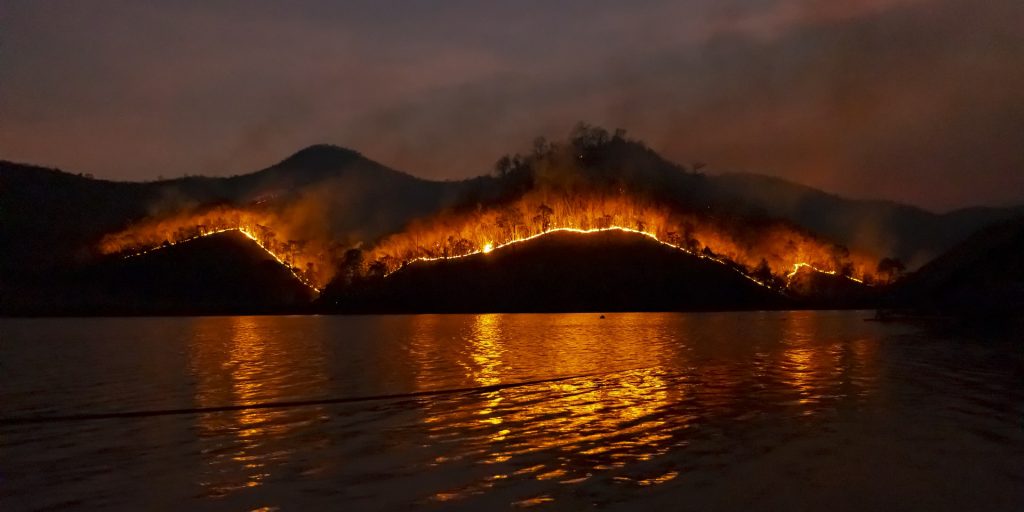Pew study unpacks how state wildfire spending norms fall short and strain budgets
Every year, dramatic photographs of smoldering communities and grieving loved ones portray the physical cost of wildfire season. What isn’t captured in those heart-wrenching images is the fiscal implications of increasingly catastrophic wildfires; they’re straining state budgets to the breaking point.
A new report from The Pew Charitable Trusts, “Wildfires: Burning Through State Budgets,” sheds light on the financial burden wildfires are placing on state budgets and highlights a need for more research and data collection on the subject while unpacking inefficiencies of the current administrative system.
“The overarching context is that wildfires are becoming bigger and more costly over time. As fires have grown, so have government costs associated with them,” said Colin Foard, lead author of the report and a manager of the The Pew Charitable Trusts’ fiscal federalism initiative. He was speaking Wednesday in a briefing about the report’s findings.
Compared to a 33-year period beginning in 1983, the average amount of acreage that burned annually between 2017 and 2021 was 68 percent larger. And in correlation, combined funding for wildfire activities undertaken by the U.S. Department of the Interior and the Forest Service more than doubled from 2011 to 2020, according to the report.
States are likewise facing a dramatic increase in wildfire spending. Washington, for example, spent an annual average of $24 million on wildfire suppression between 2010 and 2014. From 2015 to 2019, it more than tripled to $83 million, the report notes.
In response to the growing need, states are taking a two-pronged approach to mitigate wildfires, according to Foard: they’re allocating resources for unpredictable year-over-year costs, and they’re trying to reduce fire risk over time. Given the variables, this is easier said than done.
“Wildfire needs vary a lot year over year, and planning for that is a challenge,” Foard said.
Confronting wildfire is a complex and tedious process that begins with smart forest management and cooperation agreements between jurisdictional agencies. From managing forests to making sure buildings are less susceptible to fires, preparation and prevention measures are undertaken constantly, but they aren’t prioritized as highly as suppression.
Administratively, it’s difficult to make sure that line items for prevention aren’t “swallowed up by suppression costs,” he said. In this, it’s important for administrators to consider the macro perspective, “taking stock” and considering “if there’s a way to more accurately represent those costs in their budget.”
When a fire does break out, researchers found that states “most commonly draw on general fund revenue for wildfire activities and often pay upfront for these costs while awaiting reimbursement from other levels of government. States primarily use backward-looking estimates based on past suppression costs to decide how much funding to allocate for these expenses.”
These reactionary practices, while flexible in the moment, aren’t working to reduce wildfire in the long run. They also obscure the true cost of wildfire mitigation, the report says.
“These budgeting practices are under strain: In recent years, the estimates states have used to inform their wildfire budgets have frequently proved insufficient, forcing states to cover spending gaps using after-the-fact budgeting tools such as supplemental appropriations,” the report continues. “While these reactive mechanisms provide needed flexibility during emergencies, they also obscure from the state budgeting process the true costs of wildfire mitigation. Complicating things even further, patchwork of land management complicates the response of all agencies involved—state, local, federal or private. And while federal agencies have more stability, states “must balance their spending and revenue every budget cycle,” the report says. “Local governments, although not the focus of this study, also face significant challenges meeting wildfire expenses and navigating the direct impacts of fires on communities.”
To address these issues, the report highlights a need for more data on wildfire spending, more evidence-based investments, and for states to “evaluate and strengthen current budgeting practices to account for growing risk,” the report says. “By comparing actual spending versus expected spending, assessing the threat of future fires, and implementing other tools, states can more accurately understand how much to budget for wildfire management, including mitigation.”


















